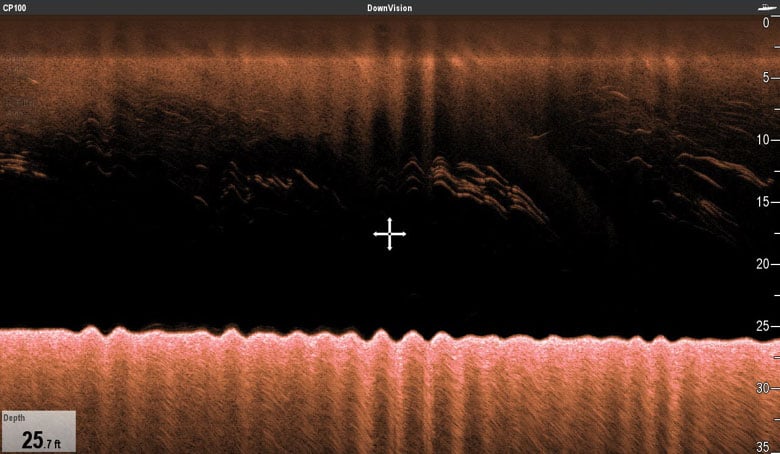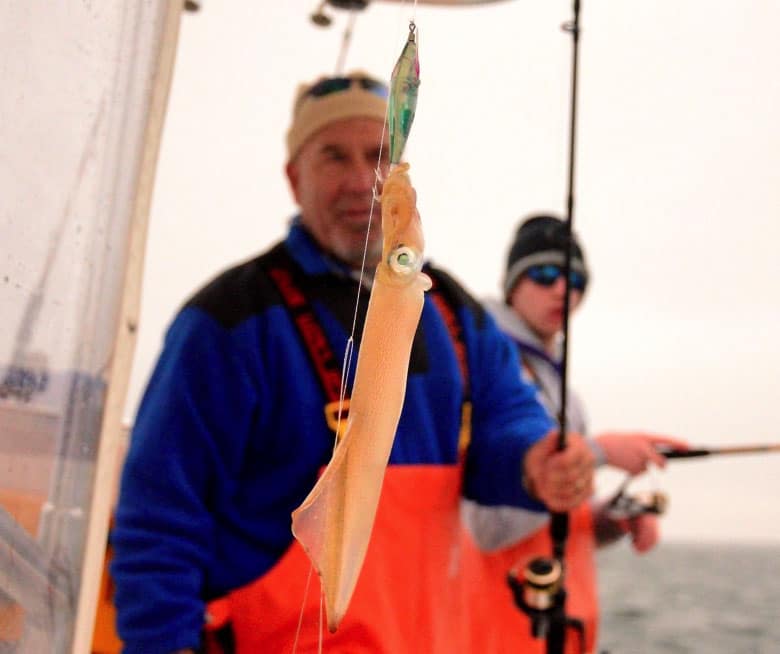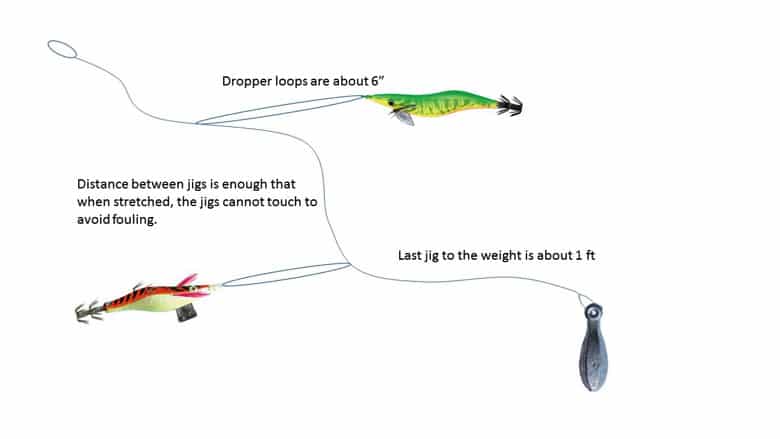I will start by telling you I am no expert, no one taught me how to jig for squid so I have no long time New England secrets to unleash, but a few days of filling buckets and you decipher a few tricks that increase your harvest efficiency. A few minutes on Google will give you days of reading material on how to do this and what to use including these two articles I find helpful:
Daytime Squiddin’ by On The Water Magazine
https://www.onthewater.com/daytime-squiddin/
Japanese Style Squid Jigging for the Northeast
https://coastalanglermag.com/boston/2015/05/japanese-style-squid-jigging-for-northeast/
When and Where
Squid can be caught virtually anywhere on the South side of Massachusetts and Rhode Island virtually all season long. Typically, early spring before the first Striped Bass arrive on Cape Cod is squid time. Mid April to Mid May is go time as quid come into shallow inshore waters to breed. The bite usually starts dying down as water temperatures rise bringing in Scup and Bluefish begin to invade. Bluefish eat them, Scup harass them and eat their eggs. I live on Cape Cod so the areas I focus on are in Nantucket Sound. The concentrations of squid vary from year to year, but traditionally Hyannis is a go-to location early spring. When that area dries up as Bluefish move in and scatter the shallow water areas I tend to move out into deeper water by the Squid dragging fleet. Squid can often be found deeper, reliably, well into the spring.


Most who are dedicating some time to rack up the numbers will anchor up in the fleet and jig away however for quicker 1 hour or less hits I have always done better drifting outside the fleet. At night, the strategy can be different where aggregating boats and lights can work as an efficient attractant. Hunting the dock lights at night in places like Hyannis Harbor or Falmouth / Woods Hole can also be productive. When the squidding is hot, 15-30 lbs an hour per person is not unreasonable.
My Standard Rig
I used to use traditional squid jigs however the past few years I converted to the smaller Japanese style jigs. I find they significantly outperform traditional styles in shallow clear water. My usual rig starts with about a 4 ft length of 20-30 lb fluorocarbon. I tie two surgeon loops on either end for the weight and main line attachment points and then two 6” dropper loops to connect various jig colors. If I had to pick, Green and Pink for jig colors. Again, the smaller the jig size, the better for me. Depending on current and drift speeds I will use a 1 or 2 oz bank sinker. Rigs can vary and you will find many different ways to do this but what I find most important is that when jigs are attached, the dropper loops are spaced far enough so as not to let the jigs hit each other. This will prevent constant fouling as you bring the jigs up and down.
How I Jig
I don’t think there is a right and wrong way to do this but this is my standard method. Light Spinning rods are perfectly good for squidding however I recently converted to conventional gear and now use a Penn Fathom conventional rod/reel, the difference in sensitivity is advantageous. I prefer to use light weights and light Suffix 832 braided line so I have better sensitivity and can stay as vertical through the water column as possible. I would rather use a lighter weight and reel up often to re-set vertically in heavier current than a heavy weight to hold bottom. This is the primary reason why I do not anchor up and prefer to drift. The lighter rig gives me more feel so I can tell the difference between Scup nibbles and squid grabs. I can tell if I am on empty water or if squid are there and grabbing the weight. It also lets me catch squid on the drop which will almost never happen with heavier weights. I will start by deploying the rig to the bottom as squid will often lay on the sand bed. My jigging motion is extremely slow with a few small twitches mixed in, allowing the weight to lift and rest on the bottom. I would describe the motion as more of a slow lift and lower, not a typically jig bounce. Every few cycles I will pause for a few seconds, often you can feel the grab. As you get into a bunch of squid, curious followers will chase caught squid to the boat. The mass that was on bottom may now be just out of sight next to the boat so I will slow down the drop resulting in squid catches much higher in the water column. When that slows down, I go back to the bottom bounce and repeat. The action can be fast and furious when you tease a school up to the boat.
Mixing It Up


If you are looking for some dinner options in addition to Calamari, swapping the weight with a small metal jig like the 2.5 oz Standard Issue Squinnow or 1 oz Heavy minnow will grab a few Scup or Sea Bass for dinner as they are often mixed in the same waters. Like the Calamari, all you need is some salt, pepper, and lemon to make it happen on the grill!
Good Luck!







